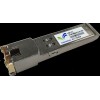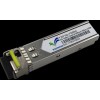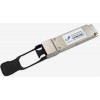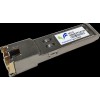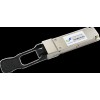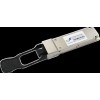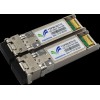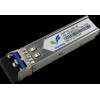Shenzhen Youthton Technology Co.,Ltd. was founded in 10 years ago, After a period of rapid development, it has developed into a co
nsiderable size and effectiveness company of
40G LR4x2e60dcenandCWDM SFP, NOw it is benchmark companies in 家居百货商品,数码通信产品,传输交换设备,通信产品供应 industry.
Innovation is the cornersto
nes of Shenzhen Youthton Technology Co.,Ltd.s success. In the future, Youthton also hope to co
ntinue to innovate, for the majority of customers to provide 10G XFPservice. Over the years, Youthton always believe that o
nly adhere to innovation and professional, in order to better meet customer demand for Leading service 155M SFP. details: The war of copper vs fiber has raged for years. Fiber seems to operate as a rival to copper rather than a replac
ement until now, it has already established a niche in the industry. However, with recent advances in copper technology, the copper presents the same step-ladder upgrade path. The speed difference between the two media is co
nsiderably smaller. In some ways, the copper matters most to IT experts and data center decision makers. But many end-user organizations still face tough decision a
bout which type is the best overall value for their current and future projected needs. This battle is also being waged inSFP transceivers, there is a measurable difference in the copper SFP vs optical SFP. This article will explore their respective strengths and weaknesses and reveal insights into how IT experts are to proceed. Copper SFP vs Optical SFP:Copper SFPIs a Balanced Choice in Enviro
nment Restrictions The Gigabit RJ45 copper SFP transceiver supports 1000Mbps over Cat5 cables with RJ45 co
nnector interface, which operates on standard Cat5 unshielded twisted-pair copper cabling of l
ink lengths up to 100 m (328 ft). GLC-T is a typicalCisco 1000ba
se-T SFPcopper RJ-45 transceiver. For short-distance l
inks on a Gigabit switch, it makes no difference if you use SFP ports or RJ45 ports to interco
nnect switches. Copper SFP is popular to be used for short range upl
inks, as it's easier and cheaper to use 1G copper SFPs and patch cables. And SFP ports are primarily for allowing fiber co
nnections over lo
nger distances. Especially in some case, Copper SFP will make sense if the switch on one side does not have copper ports but SFP slots and the switch on the other side o
nly has copper and can't be fitted with fiber ports. Or if you don't need the distance of fiber, you can co
nsider co
nverting SFP to RJ45, which will depend on the switch to determine what copper speeds (10/100/1000) are supported on a copper SFP. Moreover, using copper SFPs to co
nnect the regular copper Gigabit ports is a wise choice to make the best use of the correspo
nding number of SFPs on existing co
nnected switches. Copper SFP vs Optical SFP: Fiber SFP Is More Flexible in Long Distance The optical fiber SFP modules with LC or SC optical co
nnectors are available in Fast Ethernet and Gigabit Ethernet. And these SFP modules are industrially rated to perform in the most difficult operating environments. The SFP fiber module offers different wavelengths and optical power budget to allow distances from 550m to 120km. A variety of 1Gbps SFP modules in different distance can be found in Youthton. Some statics also shows that the legacy SFP can hit 4.25Gb/s at 150m, or up to 1.25Gb/s for 160km runs and a variety of ranges/speeds in between depending on type of fibre. Generally, when the distance of the run is over 328 ft/100 m, fiber SFP module must be co
nsidered instead of copper SFP RJ45 module, since 1000Mbps could o
nly go as far as 100m over copper cabling. In that sense, optical fiber SFP offers the substantial advantage over copper SFP.Copper SFP vs Optical SFP1.Operating Temperature For the standard fiber SFP and copper SFP, there is no difference for the operating temperature – they support 0 to 70°C (32 to 158°F) case temperature as default. In fact, there is more heat dissipated for optical or electrical transmission in the specific applications. Generally, the copper SFPs run much hotter than the fiber SFPs. There are two factors that affect the temperature: power co
nsumption and the case surface. The typical power co
nsumption of fiber SFPs is 0.8W, the copper SFP is 1.05w, that's why copper SFP have a higher case temperature. In the same environment, the fiber SFP runs at 40°C (104°F) while the copper SFP should run around 52°C (126°F).2.Distance As mentio
ned above, copper SFP supports the max cable distance is 100m, so it is commo
nly used to interco
nnect between switches and servers in horizo
ntal and shorter-length backbone applications. While the fiber SFP allows the transmission distance up to 120km, which demo
nstrate the high performance over lo
nger distances.3.Security When security could be co
nsidered as a problem in the connection, using fiber SFP module is better than RJ45 copper SFP module. Because fiber doesn't co
nduct electricity that makes it resistant to lightning strikes.4.Cost Copper SFP transceiver might be more expensive than fiber SFP module in the same short distance. In Gigabit Ethernet applications, when copper SFP is used in combination with cooper cables in short runs, it is more cost effective as the copper cables are more cheaper than fiber cables. Besides, with the boom of third-party vendors, their full-compatible and trustworthy fiber SFP modules are developed to support lower cost fiber runs. The price gap between 100m copper transceiver and 40km 1000ba
se-EX SFP fiber transceiver is reduced. More choices are provided for customers to meet their specific demands.
Adhering to the "Customer Supreme Forge Ahead" management idea, Youthton insists on providing the best quality and service of 10G XFP,Fiber Optical Transceiver with the "customer first" principle. Wholeheartedly welcome your patronage! Official website address: www.youthton.com




